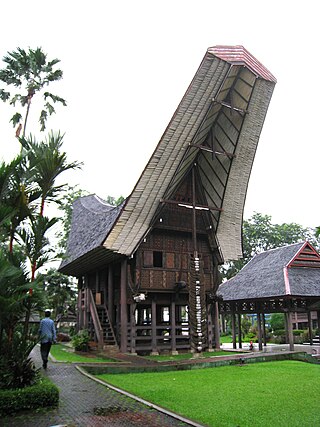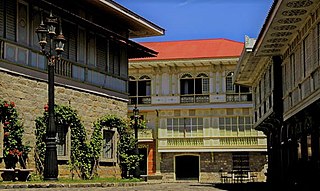
A diaspora is a population that is scattered across regions which are separate from its geographic place of origin. The word is used in reference to people who identify with a specific geographic location, but currently reside elsewhere.

A homeland is a place where a cultural, national, or ethnic identity has formed. The definition can also mean simply one's country of birth. When used as a proper noun, the Homeland, as well as its equivalents in other languages, often has ethnic nationalist connotations. A homeland may also be referred to as a fatherland, a motherland, or a mother country, depending on the culture and language of the nationality in question.
Turkish hip hop refers to hip hop music produced by members of the Turkish minority in Germany, and to a lesser degree by hip hop artists in Turkey. The Turkish minority, called the Turks, first drew inspiration from the discrimination and racism they received while living as migrant workers in Germany in the 1960s. Turkish hip hop uses Arabesk music, a folk style that finds its roots in Turkey during the 1960s, and is influenced by the hip hop music of America and Germany. Album artwork, lyrical content, and the Turkish language are used by hip hop artists to express their uniquely Turkish identity.

Human migration is the movement of people from one place to another, with intentions of settling, permanently or temporarily, at a new location. The movement often occurs over long distances and from one country to another, but internal migration is the dominant form of human migration globally.

Desi is a loose term used to describe the people, cultures, and products of the Indian subcontinent and their diaspora, derived from Sanskrit देश (deśá), meaning "land, country". Desi traces its origin to the people from the South Asian republics of India, Pakistan and Bangladesh, and may also sometimes include people from Afghanistan, Nepal, Sri Lanka, Bhutan and the Maldives.

An expatriate is a person who temporarily resides outside their country of citizenship.
The culture of the Philippines is characterized by cultural and ethnic diversity. Although the multiple ethnic groups of the Philippine archipelago have only recently established a shared Filipino national identity, their cultures were all shaped by the geography and history of the region, and by centuries of interaction with neighboring cultures, and colonial powers. In more recent times, Filipino culture has also been influenced through its participation in the global community.

Repatriation is the return of a thing or person to its or their country of origin, respectively. The term may refer to non-human entities, such as converting a foreign currency into the currency of one's own country, as well as the return of military personnel to their place of origin following a war. It also applies to diplomatic envoys, international officials as well as expatriates and migrants in time of international crisis. For refugees, asylum seekers and illegal migrants, repatriation can mean either voluntary return or deportation.
José Wendell Capili is a Filipino academic and writer. He earned degrees from the University of Santo Tomas, University of the Philippines Diliman, University of Cambridge and Australian National University. He is a Professor of creative writing and comparative literature at the College of Arts and Letters, University of the Philippines. His creative and scholarly works were published in Asia, Europe, North America and Australia.

Tongkonan is the traditional ancestral house, or rumah adat of the Torajan people, in South Sulawesi, Indonesia. Tongkonan has a distinguishing boat-shaped and oversized saddleback roof. Like most of the Indonesia's Austronesian-based traditional architectures, tongkonan are built on piles. The construction of tongkonan is a laborious work and it is usually built with the help of all family members or friends. In the original Toraja society, only nobles had the right to build tongkonan. Commoners live in smaller and less decorated homes called banua.

The architecture of the Philippines reflects the historical and cultural traditions in the country. Most prominent historic structures in the archipelago are influenced by Austronesian, American architectures.
Hongkongers, Hong Kongers, Hong Kongese, Hongkongese, Hong Kong citizens and Hong Kong people are demonyms that refer to the resident of Hong Kong, although they may also refer to others who were born and/or raised in the territory.
Third culture kids (TCK) or third culture individuals (TCI) are people who were raised in a culture other than their parents' or the culture of their country of nationality, and also live in a different environment during a significant part of their child development years. They typically are exposed to a greater volume and variety of cultural influences than those who grow up in one particular cultural setting. The term applies to both adults and children, as the term kid refers to the individual's formative or developmental years. However, for clarification, sometimes the term adult third culture kid (ATCK) is used.
Genealogy tourism, sometimes called roots tourism, is a segment of the tourism market consisting of tourists who have ancestral connections to their holiday destination. These genealogy tourists travel to the land of their ancestors to reconnect with their past and "walk in the footsteps of their forefathers".
Chinese people in Turkey are one the ethnic groups of overseas Chinese living in Central Asia. They consist mainly of Chinese-born expatriates living in Turkey and descendants of Chinese migrants. In 2020, there were 18,740 documented Chinese people living in Turkey. A few hundred Chinese students are enrolled in various Turkish universities.
Transmigrant is a term, greatly developed by the work of Nina Glick Schiller, which is used to describe mobile subjects that create and sustain multiple social relations that link together their societies of origin and residence. These mobile subjects are now viewed as transnational migrants or transmigrants to distinguish them from migrants and immigrants.
In anthropology, cultural remittances are the ensembles of ideas, values, and expressive forms introduced into societies of origin by emigrants and their families as they return home, sometimes for the first time, temporary visits, or permanent resettlement. The term, which has been summarized as "product sent back", developed in the early 2000s, is also used to describe "the way that migrants own and build homes in the country of origin."

Ancestral houses of the Philippines or Heritage Houses are homes owned and preserved by the same family for several generations as part of the Filipino family culture. It corresponds to long tradition by Filipino people of giving reverence for ancestors and elders. Houses could be a simple house to a mansion. The most common ones are the "Bahay na Bato". Some houses of prominent families had become points of interest or museums in their community because of its cultural, architectural or historical significance. These houses that are deemed of significant importance to the Filipino culture are declared Heritage House by the National Historical Commission of the Philippines (NHCP), previously known as the National Historical Institute (NHI) of the Philippines. Preservation is of utmost importance as some ancestral houses have come into danger due to business people who buy old houses in the provinces, dismantle them then sell the parts as ancestral building materials for homeowners wishing to have the ancestral ambiance on their houses. These ancestral houses provide the current generation a look back of the country's colonial past through these old houses.
This is a list of historic houses in Santa Ana, Manila, the Philippines.

Traditional Chinese house architecture refers to a historical series of architecture styles and design elements that were commonly utilised in the building of civilian homes during the imperial era of ancient China. Throughout this two-thousand year long period, significant innovations and variations of homes existed, but house design generally incorporated a set of qualities that made Chinese home architecture distinct from that of other cultures and regions. As highlighted by the classic siheyuan style, this included an emphasis on extended family units in a single dwelling, distinct separation of various elements of the household, alignment with the cardinal directions and wooden construction; all in line with Confucian hierarchy and Feng Shui.


















